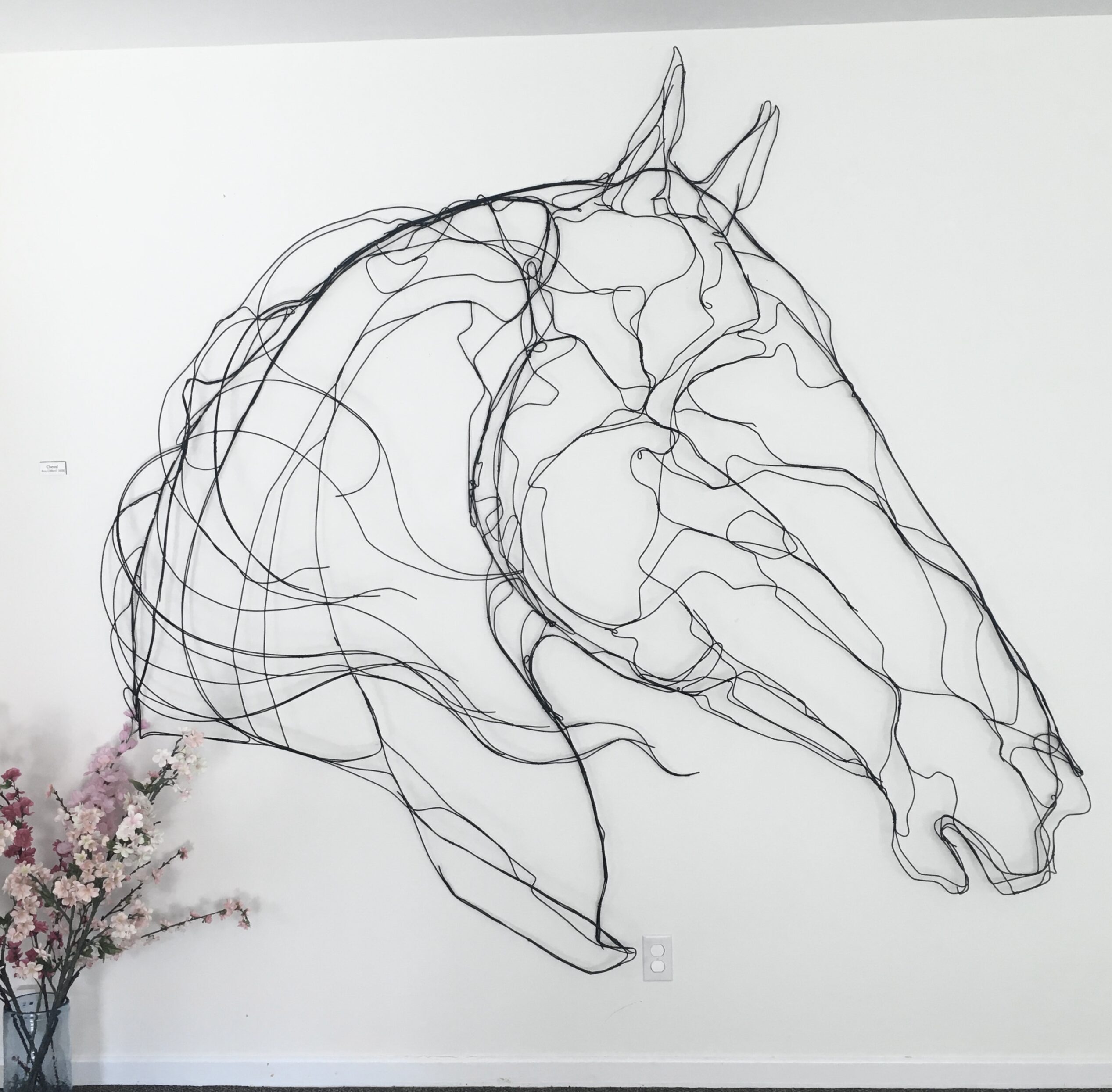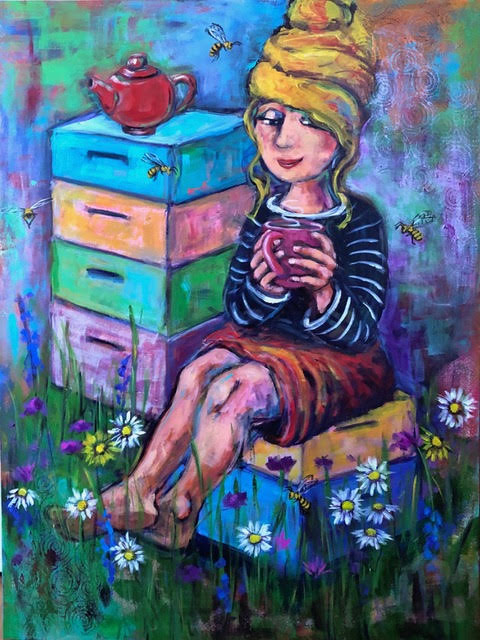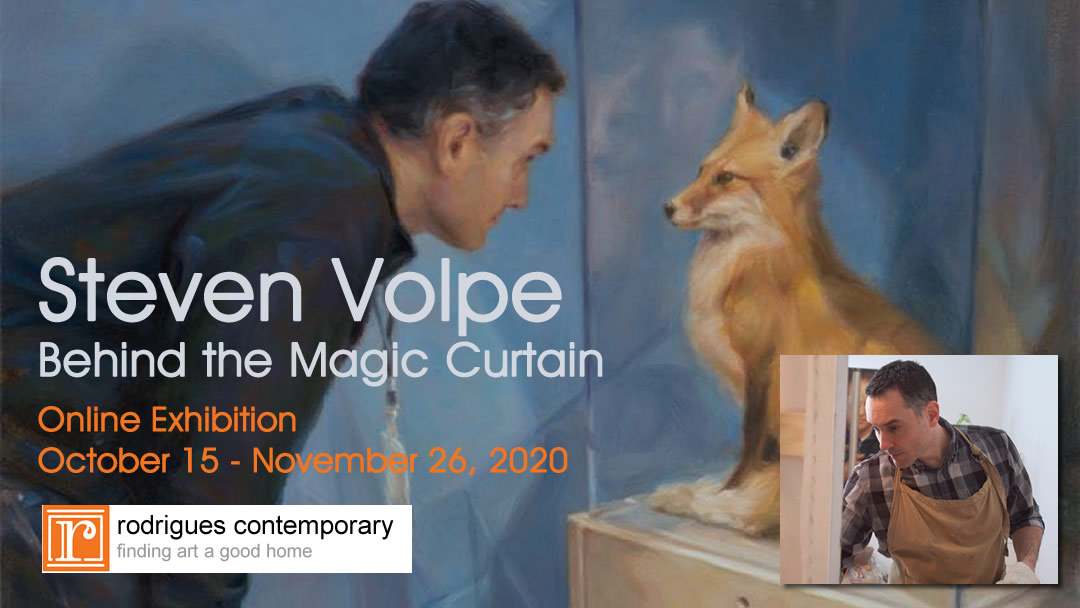Social Expression: Authenticity Deficit in a Digital Culture
How is social media similar to the bible? “Counterfeiter”, painted by Canadian artist Steven Volpe uses allegory to interpret our authenticity deficit. Relationships are made between the cross and crucifixion with the placement of limbs. Tools are shown to support reference to Jesus being a tektōn as mentioned in Scriptures.
Although one may tend to make the obvious literal connection, I don’t believe that’s the intention. The subjects in this piece are a potentially performative reflection of our digital culture, a choreographed narrative to sway an audience. Players are presented as carefully curated versions of how they want to be perceived, counterfeit images of reality, if you will.
Two hands measure a wrist. At the same time, one hand holds three red paint swatches. A cross is formed where the measuring tape and wrist meet while blood drips down the arm from a supposed wound in the palm suggestive of crucifixion. Triangles are formed from all directions converging towards the focal point. Additionally, a cool white light draws attention to the same site. On the bottom right corner, Volpe has painted a camera, cleverly inviting us to look at the world through our own lens. Through many implied lines, he successfully keeps our eyes moving around the painting, searching for more evidence to support our theories.
Colours on the flesh are agitating and uncomfortable. Shades of red on the swatches depict a warning of ensuing danger. The ambience of the entire painting is redolent of an eerily dark and musty basement. However, it’s interesting to note that there is a softness in the blue background indicative of a very calm and serene atmosphere, contradictory to what we feel may happen or may have happened at first glance.
Looking at the softness of the resting arm, thinner fingers, and shape of fingernails lead me to believe this arm is portrayed by someone with a more delicate nature. The hand is very relaxed and open, reinforcing a sense of peacefulness. This submissive individual seems composed while being coached, primped and fussed over with no visible tension. There doesn’t seem to be any tension. Conversely, the two hands measuring the wrist have a more rigid, dominating quality.

Counterfeiter 22×30 Oil on Canvas
Both the slice of wood and the camera are important components. The former can be twisted and manipulated, while the latter can be used as a tool to twist and manipulate. The motionless arm is lying on a wooden plank with horizontal crack down the centre. A split in the board is representative of imperfections, real or perceived. Photographs are visual documentations of something memorable. In this case the reveal has not yet been shown. As spectators, we are only offered a glimpse of the happenings prior to the still being taken.
The more I study ‘Counterfeiter’, the more I find this piece relevant to our world currently. It’s a tragedy of sorts. Humankind is hard-pressed to find an honest publication without a performative agenda on social media platforms or the news for that matter. Influencers have the ability to fabricate an idealistic version of the self or environment. Even the title itself refers to one who is being fake. The creator can shape our perspective or perhaps even our behaviour by staging or digitally enhancing images to remove flaws before making them public. It’s pre-meditated and vain. Pride (vainglory) is a deadly sin in Christian theology. Perhaps that’s why the artist painted biblical references.
If you believe the story, the Roman Catholic doctrine identifies Satan as the ultimate counterfeiter, disguising himself as a serpent and tempting Eve with the forbidden fruit in the Garden of Eden. As a society, we are not that different from the serpent in the story. We shift our personalities to correspond with each platform depending on our audience and what message we want to send.
Volpe’s representational works are complex and cryptic. That’s what I love most about his paintings. He guides us only partway then allows us to create our own truth.
For more of Steven Volpe’s work, visit artgalleryonline.ca.
Written by Teresa Rodrigues Brownell,
Gallerist, Critic, Artist, Founder of Rodrigues Contemporary






